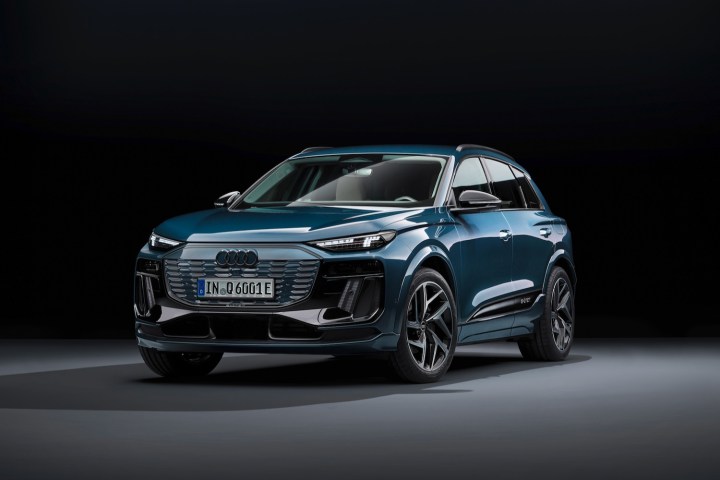
Audi doesn’t get enough credit for getting luxury car buyers comfortable with EVs. While Tesla took care of the image-conscious types, the German brand unveiled its e-tron electric SUV in 2018 with the tagline “electric has gone Audi” in hopes of getting loyal customers excited about (or, at least, acclimated to) electric cars by pitching the e-tron as an Audi first and an EV second.
The e-tron wasn’t a one-off, either. It’s since evolved into the Q8 e-tron and has been joined by the sporty e-tron GT and entry-level Q4 e-tron. So, while some car brands are only just introducing their first electric models, Audi is ready for round two.
The 2025 Audi Q6 e-tron is a true second-generation EV, scheduled to arrive at dealerships later this year. Slotting between the Q4 e-tron and Q8 e-tron in size, this new electric SUV leaves both behind when it comes to technological sophistication.
PPE is the key
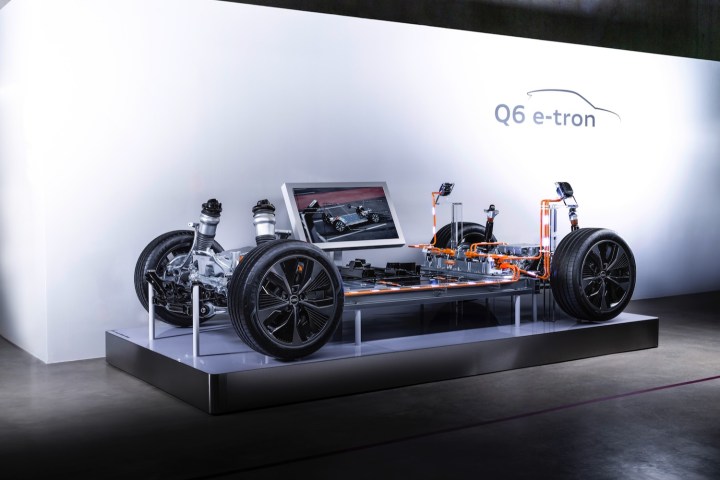
The Q6 e-tron is the first Audi based on the Premium Platform Electric (PPE), which was co-developed with fellow Volkswagen Group brand Porsche, whose launch model for the platform will be the Macan Electric.
“Platform” is a nebulous term. It’s generally understood to be the basic structure of a car, but in the case of PPE, “platform” means not only that structure but also many of the major components attached to it. AN EV-specific platform, PPE enables a number of key hardware upgrades compared to other Audi EVs, including 800-volt charging, a new electrical architecture that enables more software-based features, a new battery-pack concept that Audi claims will improve range compared to current EVs, and more power-dense drive units.
Audi has done plenty of experimenting with platforms for its EVs. Its first EV, the e-tron (now Q8 e-tron) uses the same MLB Evo platform as combustion-engine vehicles like the Audi Q8. The Q4 e-tron shares the MEB-dedicated EV platform with Volkswagen-branded EVs like the ID.4 and ID.7. The e-tron GT is based on the same J1 platform as the Porsche Taycan. But Audi thinks PPE is the future.
More efficient motors
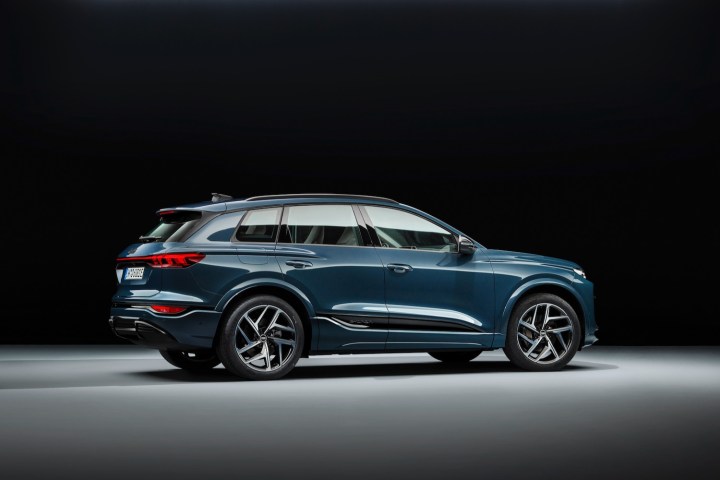
Audi’s philosophy with PPE is all about methodically combing over individual components for efficiency and performance gains rather than making dramatic changes to the overall vehicle concept.
Like many other EVs, for example, the Q6 e-tron has a dual-motor all-wheel drive powertrain, with each motor in a self-contained drive unit powering each axle. But Audi has made the drive units more compact. Weighing 192.9 pounds and 261.1 pounds, respectively, the front and rear drive units have 62% greater power density than the first-generation drive units from the e-tron — meaning they produce more power per pound — with 30% lower energy consumption.
Audi combed over individual components for efficiency and performance gains.
As with the Q4 e-tron, Audi chose an asynchronous motor for the front and a permanently excited synchronous motor for the rear. The rear motor does most of the work, so Audi chose the more efficient, permanently excited type for this job. According to the automaker, an asynchronous motor is cheaper, so it was relegated to the front axle, which only gets power when the driver really opens the throttle.
Together, the two motors produce a steady 422 horsepower and a peak 456 hp with launch control (Audi isn’t revealing torque figures), which gets the Q6 e-tron from zero to 60 mph in 5.0 seconds with launch control, Audi estimates. A more powerful SQ6 e-tron will also be available, tuned for a default 483 hp or 510 hp with launch control — more than the three-motor Audi SQ8 e-tron. Audi expects the SQ6 to match that model’s 4.2-second zero to 60 mph time. Top speeds are 130 mph for the Q6 e-tron and 143 mph for the SQ6 e-tron.
Big battery, fast charging
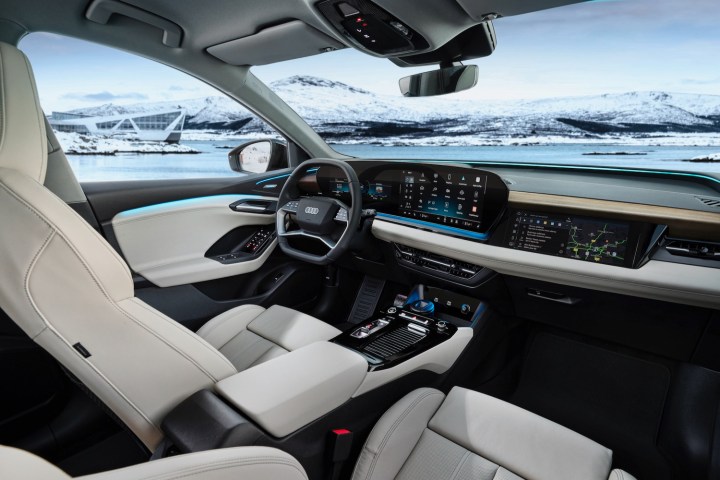
Audi claims the Q6 e-tron will have a more efficient battery pack design, with a 15% weight reduction compared to previous packs, plus cells and modules with greater energy-storage capacity within the same volume. Audi is still using prismatic battery cells rather than the cylindrical cells preferred by Tesla and Lucid, though. The pack is also a fairly large 100 kilowatt-hours (with 94.9 kWh of usable capacity), so Audi’s target of over 300 miles of range seems like a bare minimum.
With an 800-volt system like the e-tron GT’s, the Q6 e-tron can DC fast charge at up to 270 kW and maintain that maximum power level for a relatively long period of time. It can also charge the two halves of the pack in parallel at 135 kW at lower-power stations to get the fastest charge possible. Under ideal conditions, that’s 10% to 80% in 21 minutes, according to Audi. When using the built-in navigation system, the Q6 e-tron will also automatically heat or cool its battery pack on the way to a charging station to ensure the ideal temperature for charging.
While the automaker is adopting Tesla’s North American Charging Standard (NACS), that’s not scheduled to happen until after the Q6 e-tron’s launch, so the first cars will ship with Combined Charging Standard (CCS) ports like other current Audi EVs.
Infotainment gets predictable updates
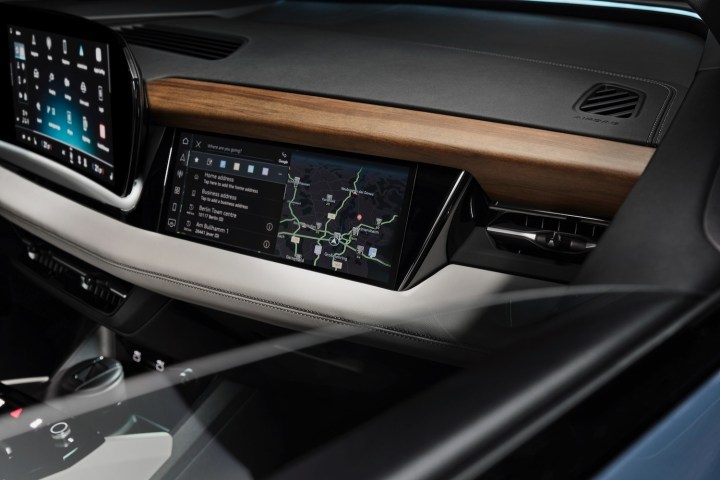
The Q6 e-tron also debuts a new incarnation of Audi’s Multimedia Interface (MMI) infotainment system that’s backed by a new electrical architecture dubbed E3 1.2 and features the most elaborate screen setup in an Audi to date. An 11.9-inch digital instrument cluster and 14.5-inch touchscreen are arrayed in a winglike formation in front of the driver, with a 10.9-inch front-passenger screen and an augmented-reality head-up display thrown in for good measure.
The various screens feature sharp but plain graphics and, in the prototype vehicles we had access to, quick responses. That’s good because Audi has chosen to rely mostly on touchscreens and voice recognition, keeping buttons and knobs to a minimum. While the passenger can access important functions like radio and navigation from their own screen, the main touchscreen is also easily accessible despite being tilted toward the driver.
The Q6 e-tron has the most elaborate screen setup in an Audi to date.
The operating system is Android-based but doesn’t use Google apps like systems from Volvo, Polestar, or General Motors. Audi still provides its own native voice recognition. Wireless Apple CarPlay and Android Auto, as well as Amazon Alexa connectivity, are supported as well.
What the Android OS does enable is third-party apps for things like web browsing, video streaming, and gaming, similar to the new Ford Digital Experience system. Front passengers can even watch videos on their own screen while the car is moving (a filter blocks the driver’s view). Like Ford, Audi also expects to offer a wide variety of third-party apps over time and will develop new features that can be added via over-the-air (OTA) updates. The automaker claims that process will be faster thanks to the E3 1.2 architecture’s consolidation of in-car computing into five primary modules.
Evolutionary design shows off high-tech lights
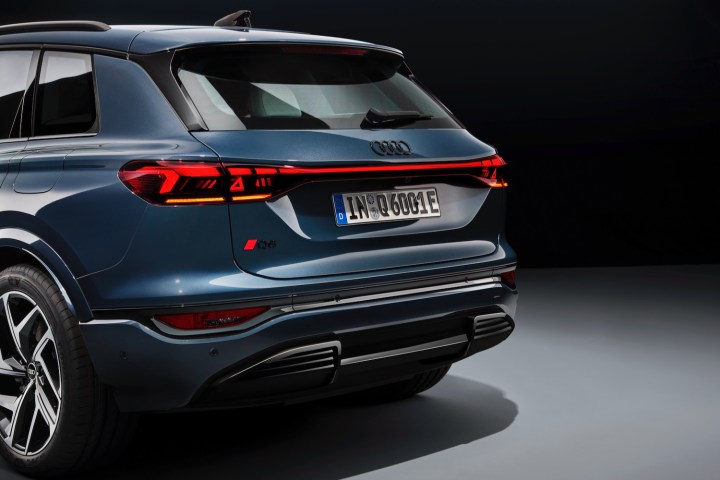
The Q6 e-tron looks like a younger, fitter version of the Q8 e-tron. Despite its classic SUV proportions, it doesn’t look bulky thanks to visual tricks like pronounced creases above the fenders, which are meant to reference the classic Audi Quattro’s boxed fender flares and blacked-out lower trim. The blacked-out sections also represent functional elements like the front air intakes, rear diffuser, and the battery pack, which is silhouetted by the lower door trim.
The Q6 e-tron looks like a younger, fitter version of the Q8 e-tron.
Less original are the obligatory massive grille and stacked headlights, which follow a format popularized by the Jeep Cherokee and Hyundai Kona, albeit with much more sophisticated tech. The Q6 e-tron gets Audi’s latest digital light system, with programmable daytime running lights and taillights comprised of 122 and 360 individual OLED elements, respectively.
In addition to giving the lights a cool pixelated look, the system lets drivers program eight different patterns for the daytime running lights. Outside the U.S., the taillights have an animated effect and can project a small triangle when the hazard lights are turned or when occupants are about to exit the vehicle. U.S. regulations will likely prevent features like that.
First impressions
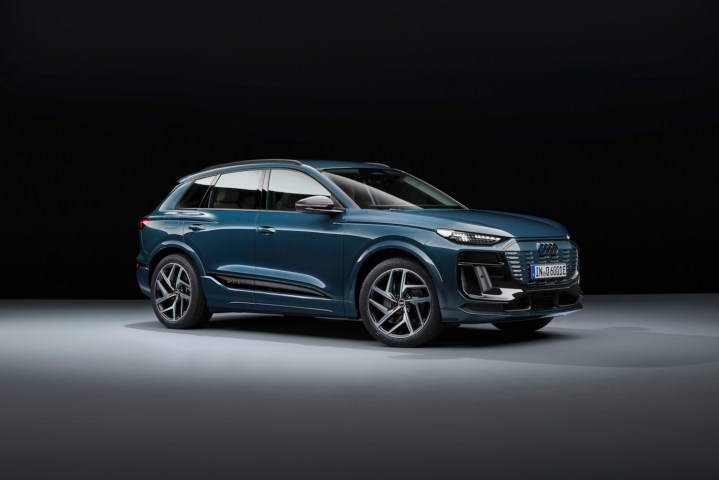
Digital Trends had the opportunity to take a few short laps on a test track in a prototype Q6 e-tron. This brief first impression didn’t reveal anything truly remarkable. Competent handling couldn’t fully mask this electric SUV’s considerable weight, and acceleration was impressive but not ferocious.
Audi’s rivals BMW and Mercedes-Benz have struggled to design braking systems that blend regenerative braking and friction brakes to provide consistent deceleration and feel while using both forms of braking. The Q6 e-tron had no such issues; the brake pedal felt the same regardless of how the car was braking. Audi also lets drivers toggle the level of regeneration from virtually zero up to full one-pedal driving — the EV signature feature that lets drivers control speed without touching the brake pedal.
Well-tuned braking system aside, the many changes Audi has made to its EV hardware likely require more than a few laps of a closed course to make themselves known. Still, the prototype made a good first impression, so we’re eager to get more seat time to find out what Audi’s latest EV feels like on the road.


